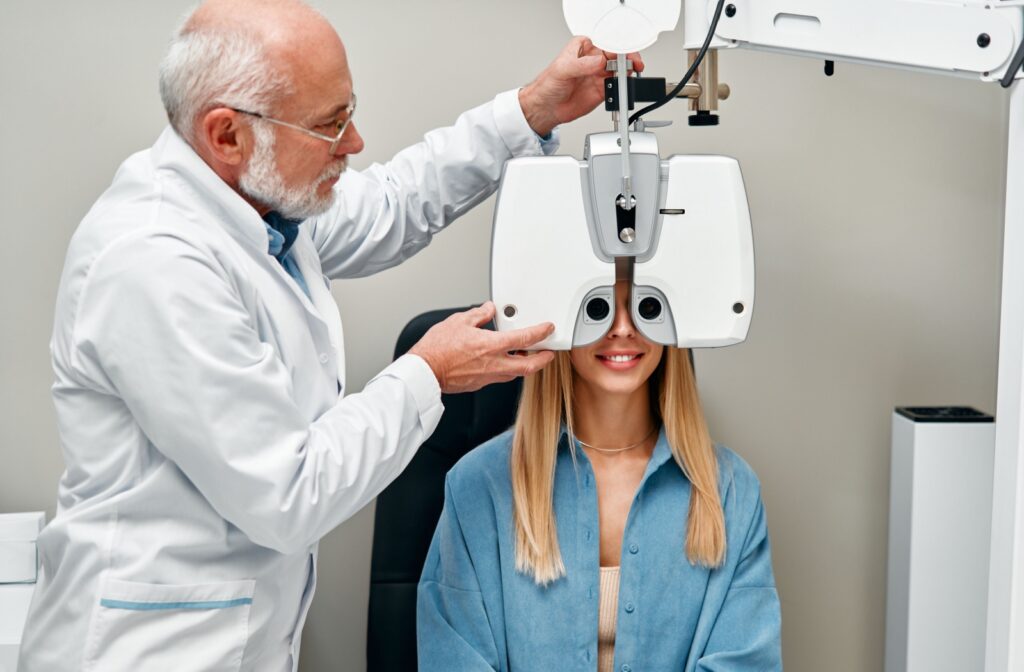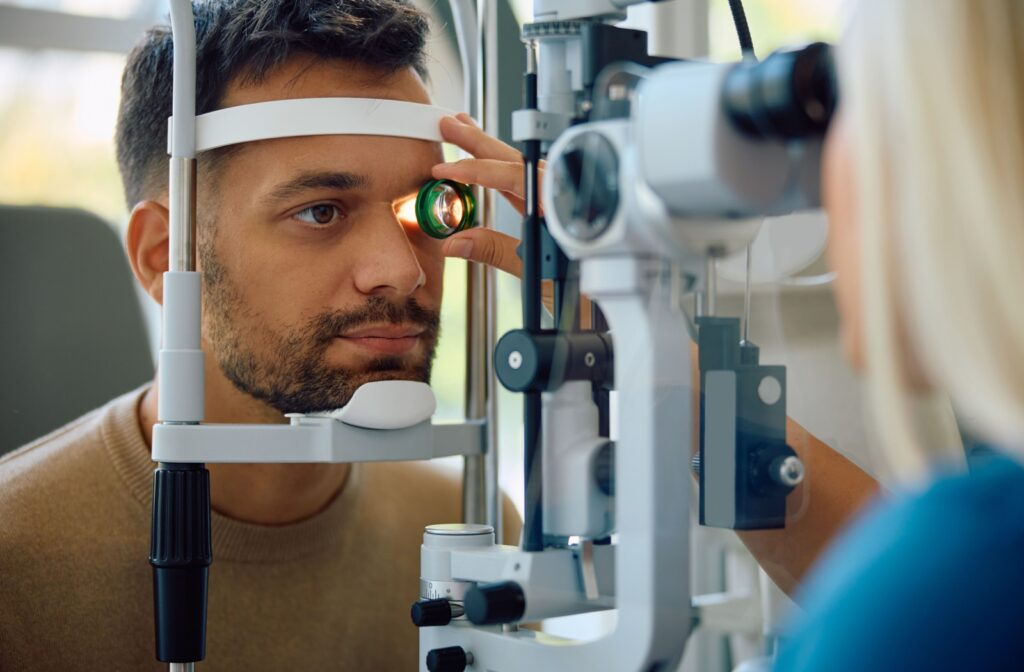When most people think about eye exams, they picture reading an eye chart or updating their glasses prescription. But there’s a lot more going on behind the scenes. A comprehensive eye exam doesn’t just evaluate how well you see—it also offers a window into your overall health.
In fact, your optometrist can often detect early signs of serious health issues, including diabetes, just by examining your eyes.
Let’s explore how your eyes can reveal signs of diabetes, what changes optometrists look for, and why regular eye exams are so important for your overall health.
What Is Diabetes?
Diabetes is a long-term health condition that affects how your body processes sugar (glucose). When you eat, your body converts food into glucose, which is then used by your cells for energy. This process relies on a hormone called insulin, which helps move glucose from your bloodstream into your cells.
If you have diabetes, your body either doesn’t produce enough insulin or can’t use it properly. This leads to elevated blood sugar levels, which, over time, can damage organs and tissues—including your eyes.
There are two primary types of diabetes:
- Type 1 Diabetes: An autoimmune condition where the body’s immune system attacks the pancreas, preventing it from producing insulin.
- Type 2 Diabetes: The more common form, where the body becomes resistant to insulin or doesn’t produce enough to meet demand.
Diabetes is a growing health concern, affecting millions of people across North America. And while many associate it with blood sugar and diet, its effects can be far-reaching, especially when it comes to vision.
How Does Diabetes Impact Eye Health?
High blood sugar levels can damage blood vessels throughout the body, including those in your eyes. When this happens, it can lead to several serious eye conditions, some of which can cause permanent vision loss if not caught early.
1. Diabetic Retinopathy
This is one of the most common and serious eye-related complications of diabetes. It occurs when high blood sugar damages the tiny blood vessels in the retina—the light-sensitive layer at the back of your eye. These damaged vessels can leak fluid or bleed, leading to swelling, vision distortion, or even retinal detachment in advanced stages.
2. Diabetic Macular Edema
The macula is the central part of the retina responsible for sharp, central vision. When fluid builds up in this area due to leaky blood vessels, swelling and blurred or distorted vision may result.
3. Increased Risk of Other Conditions
People with diabetes are more likely to develop other eye problems as well, including:
- Glaucoma – increased pressure in the eye that damages the optic nerve
- Cataracts – clouding of the eye’s natural lens
All of these conditions can affect your ability to see clearly and comfortably, but the good news is that early detection can help you protect your sight.
How Can an Eye Exam Reveal Signs of Diabetes?
An eye exam is one of the few medical checkups where a healthcare provider can look directly at your blood vessels—specifically, those in the retina. This makes your eyes an excellent indicator of what’s happening elsewhere in your body.
During a comprehensive eye exam, we can:
- Examine the retina using special instruments or digital retinal imaging
- Look for microaneurysms, small bulges in blood vessels that can indicate early diabetic damage
- Check for fluid leakage, swelling, or abnormal blood vessel growth
These subtle changes in the eye may appear long before you notice any symptoms of diabetes or vision loss. That’s why eye exams can sometimes be the first step in diagnosing diabetes—even before a blood test.

Other Health Conditions an Eye Exam Can Detect
Eye exams are a powerful diagnostic tool, not just for vision problems but for overall health in general. In addition to diabetes, your optometrist can spot early signs of:
- High blood pressure – through changes in the appearance of retinal blood vessels
- Glaucoma – often detected through increased eye pressure and optic nerve changes
- Cataracts – when the lens becomes clouded
- Macular degeneration – particularly age-related changes that affect central vision
- Thyroid eye disease – which can affect eye movement and appearance
- Retinal tears or detachment – potentially serious conditions that can lead to sudden vision loss
In many cases, these health concerns don’t cause noticeable symptoms in their early stages. Regular eye exams help catch problems early, when they’re most treatable.
How Often Should You Get an Eye Exam?
For most adults, getting a comprehensive eye exam every year is ideal. However, if you have diabetes, your optometrist may recommend annual or even more frequent exams to monitor for early signs of diabetic eye disease.
Children, seniors, and those with existing health conditions may also need to see an optometrist more often. Your eye doctor will help determine a personalized schedule based on your health history and risk factors.
Why Early Detection Matters
Many diabetic eye conditions develop without any warning signs. By the time you notice blurry vision or vision loss, significant damage may already have occurred.
Routine eye exams are one of the most effective ways to catch these issues early—before they become harder to manage. They offer more than just a prescription check; they provide real insight into your health.
Book Your Eye Exam in League City Today
Your eyes can tell a story about your overall health—including early signs of diabetes. Whether you’re managing diabetes or just due for a routine check, a comprehensive eye exam is one of the best ways to protect your vision and your wellness. Restore Vision Center in League City, TX is here to help you stay ahead of potential health issues with thorough, personalized eye care. Ready to take the next step in proactive health? Book your eye exam today and see the bigger picture—starting with your eyes.




